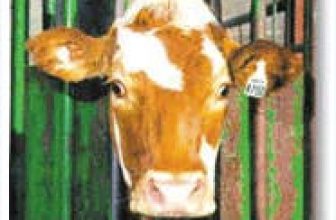
It is difficult to monitor underwater creatures, and the underwater world is equipped with RFID
[ad_1]
In August 2008, a large number of oysters died in northwestern France, causing economic losses of up to hundreds of millions of euros. The shellfish industry was hit hard. The French authorities tried hard to “check the culprit”. At present, the reasons for the death of oysters are still divided. There are certain difficulties in monitoring these seabed or tiny organisms. However, the application of RFID technology to observe the physiological phenomena of organisms is now a new weapon for agricultural and biological experts. RFID is an abbreviation of English phrase, namely radio frequency identification, commonly known as electronic tag.
Singapore’s underwater world is a famous tourist attraction. This is known as the largest water tank in Southeast Asia. There are more than 2500 underwater creatures in the museum, with more than 250 species. Tourists often have to refer to the hallmarks when facing numerous sea creatures. However, even after reading the signs, they still don’t know the characteristics of the creatures, because when they look back, the creatures have already swam away.

In order to allow tourists to figure out what fish they were looking at, Singapore Underwater World implanted more than 20 fish in the museum with RFID tags in 2007, and set up a touch screen in front of tourists. When a marked fish swims in front of a display window equipped with sensors, the screen will display information such as their species, the name given to it by the aquarium, the characteristics of the fish, their habits, and the place of origin.
Guo Mingtian, General Manager of Underwater World Singapore, said: “At this stage, only the fish in the “living fossil” exhibition hall are implanted with radio frequency identifiers. However, in the long run, Underwater World may also implant such identifiers in all fish. In vivo.” The conservation and utilization of seed stocks is the current trend of policies and research in agriculture, fishery and animal husbandry around the world. Research on selection and breeding is not only to better provide people’s livelihood, but also to preserve good seed stocks and genetic resources to prevent the loss of species. Genetic diversity.
However, the number of fish species is huge, and while the ecological record of fish breeding is labor intensive, errors are prone to occur. The identification of the markings on the fish body only by eyes will also cause misjudgment. The damage to the fish body by picking up live fish is even more unpredictable. , Data records are not easy to save, so the application of RFID technology for monitoring and tracking, combined with hydrological data and other information, can build a complete and prudent seed stock management operation, which is safer, less troublesome, and labor-saving compared with traditional records.
However, when RFID is applied to water bodies, it is easily affected by humid environments. When the data in the RFID tag is damaged, the problem of data backup remains to be solved. In addition, the initial investment cost of RFID in the transmitter, reader, encoder, and antenna is also high.
[ad_2]




